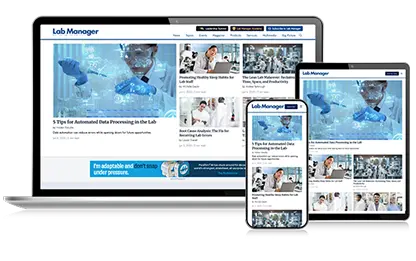Problem: As one of the most important and commonly used research procedures in the laboratory, centrifugation is incorporated into many protocols— each with their own set of requirements and experimental challenges. As a result, selecting a suitable centrifuge model requires careful consideration of the specific applications and sample types to be processed. Separation speed and sample volume are key factors in the decision-making process. Previously, centrifuge rotors offered little choice in regards to these factors, but the use of carbon fiber rotors has now addressed this, while providing many long- and short-term benefits to all in the laboratory.
Centrifuge rotors are typically made of ‘lightweight’ aluminum and titanium metals, yet these often present a unique lifting hazard in the laboratory. Conventional floor model centrifuge rotors can weigh up to 70 lbs (~30 kg) when fully loaded and are awkward in shape. In order to control the ergonomic hazards associated with lifting centrifuge rotors, it is recommended that a second person always assist with the removal of the rotor from the centrifuge and that a cart be used for transport. However, this is not always practical.
In addition, metal rotors are susceptible to corrosion and pitting from moisture, chemicals, alkaline solutions such as sodium hydroxide or other salts in the laboratory, weakening a rotor’s structural integrity. Additionally, substantial load or stress, as a result of high rotational speeds and repeat cycles, can also threaten metal rotor structure by causing it to stretch and change size, limiting rotor life or even leading to rotor failure. Metal rotor failures due to stress corrosion can cause catastrophic damage to the centrifuge, incur costly repairs for the laboratory and—more importantly—put laboratory personnel at risk.




Solution: Advances in the material technology of centrifuge rotors have led to the introduction of carbon fiber composite materials. Thermo Scientific’s Fiberlite carbon fiber rotors are up to 60 percent lighter than equivalent metal rotors. Lightweight carbon fiber rotors feature improved ergonomics for a safer work environment and minimize the risk of damage to centrifuge equipment. Many of the large volume carbon fiber rotors are even designed with a lifting handle, allowing users to transport the rotor in and out of the centrifuge with less force and bending, reducing the risk of lower back injury. These lightweight properties also result in faster acceleration/deceleration rates for shorter run times and decreased wear to critical centrifuge drive components.
Carbon fiber composite rotors are also corrosion-resistant, eliminating the ever-present hazard from the exposure of moisture, chemicals or alkaline solutions. These rotors are safe to use with most laboratory detergents and solutions, ensuring easy rotor care and maintenance, and are autoclavable for sterile use. Additionally, carbon fiber is exceptionally resistant to fatigue, minimizing the threat of elongation and deration for extended run cycles.
For maximum support, Fiberlite rotor cavities are molded to the exact shape and tolerances of many disposable bottles and conical tubes. In addition, patented cap support is designed to relieve high g-forces. This reduces processing times while improving efficiency as labware can be spun at maximum speeds without risk of damage. Coupled with improved ergonomics and lightweight design, carbon fiber composite rotors offer the ideal solution for laboratories wishing to move away from the challenges associated with heavier metal rotors.
For more information, visit www.thermoscientific.com/fiberlite
Problem: As one of the most important and commonly used research procedures in the laboratory, centrifugation is incorporated into many protocols— each with their own set of requirements and experimental challenges. As a result, selecting a suitable centrifuge model requires careful consideration of the specific applications and sample types to be processed. Separation speed and sample volume are key factors in the decision-making process. Previously, centrifuge rotors offered little choice in regards to these factors, but the use of carbon fiber rotors has now addressed this, while providing many long- and short-term benefits to all in the laboratory.
To continue reading this article, sign up for FREE to

Membership is FREE and provides you with instant access to eNewsletters, digital publications, article archives, and more.















